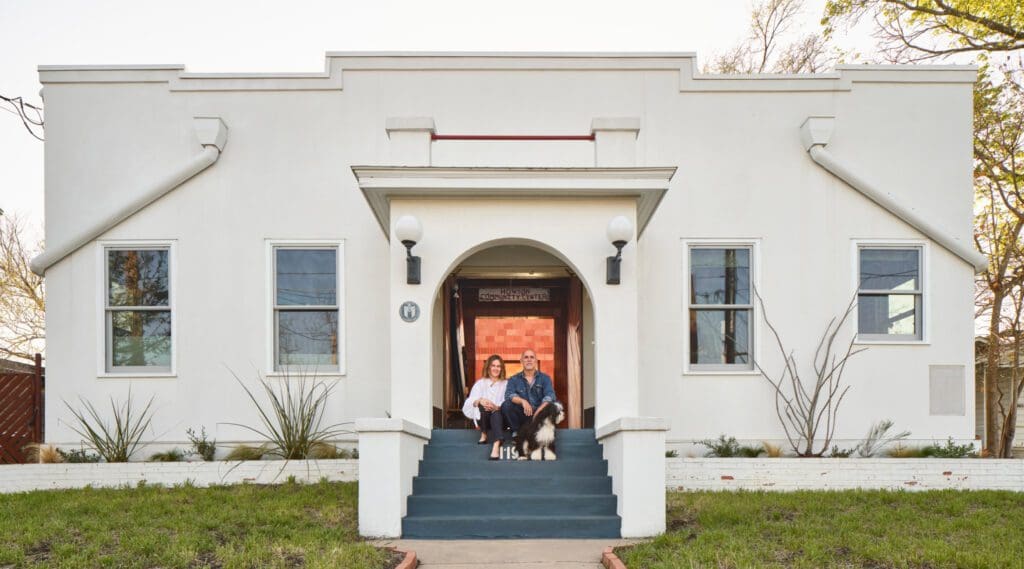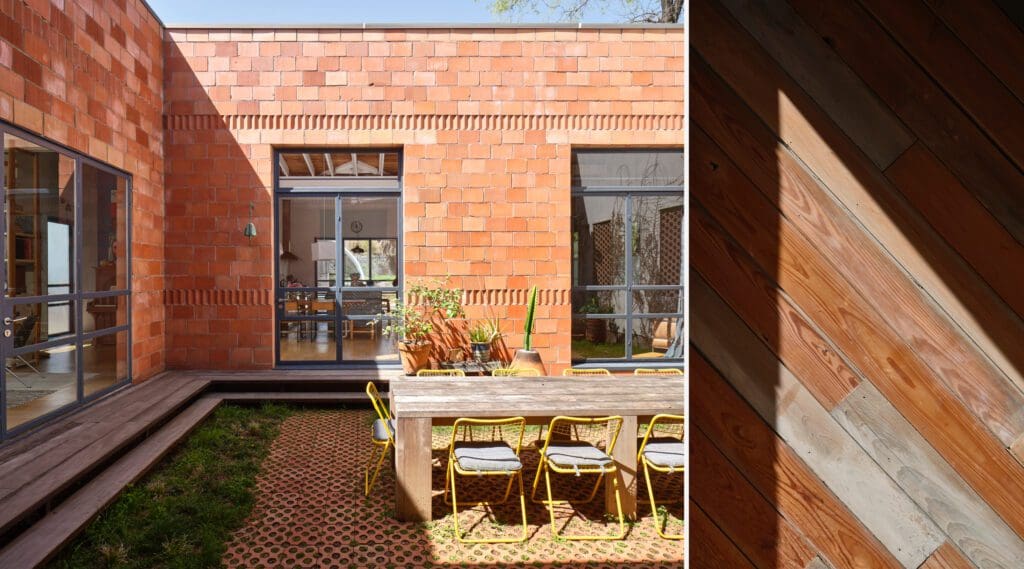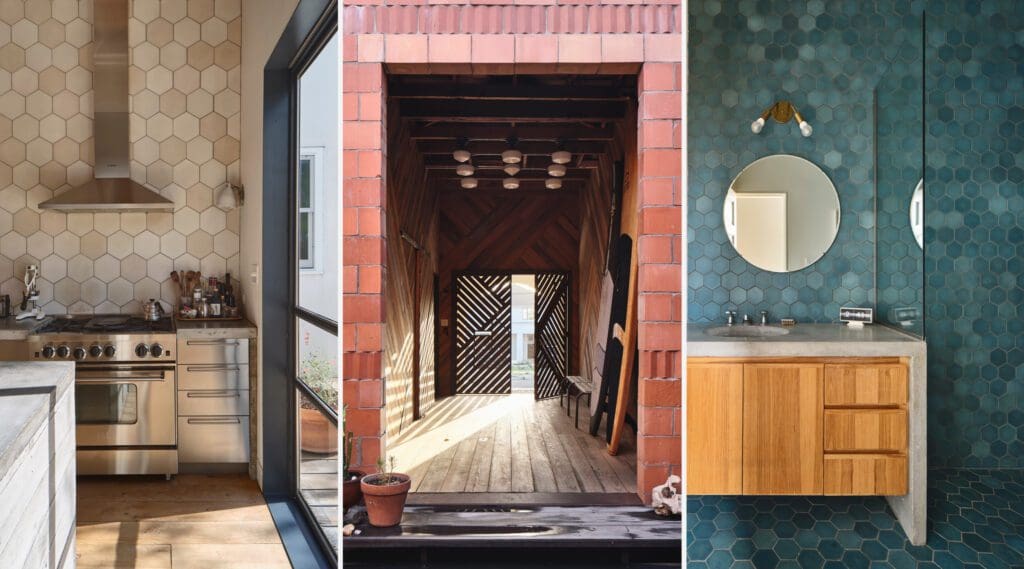Cowboy Cool

A Postwar Building Transformed into a Modern Home
Words Christopher Ferguson, RA | Photos Andrea Calo
Mediterranean ease meets the Texas breeze in this historic Foster Heights building, imaginatively renovated as a personal residence by husband and wife design duo Jen Turner and Jack Barron.
Near the end of a quiet cul-de-sac and nestled within a row of postwar single family homes, one building in particular stands out. Gleaming white in the Texas sun, six concrete steps lead to an arched portico and two full-height, diagonally slatted steel doors.
The smooth stucco facade is unembellished, yet its stepped parapet makes it taller than the neighbors, implying an institutional past. Four simple, single hung windows flank the portico symmetrically, evenly spaced and marching continuously around the structure’s deep, rectangular perimeter.
Originally built in 1928 for the Federation of African American Women’s Clubs, it bears a landmark designation from the Texas Historical Commission, having served as a critical hub for Austin’s African American community at the time.
After decades shuffling between ownership as leasable office space, it hit the open market in 2013, just as Jen Turner and her husband, Jack Barron, were planning a move back home after 15 years in New York and Portland. The couple scooped up the property and, with respective backgrounds in architecture and hospitality, set to work imagining an ambitious and thoughtful plan for the building’s next era as a verdant space to live, work, and spend time among nature.

Up Next: Jen and Jack are also working on a ceramics venture called “La Mama.”
“We wanted to truly live indoors and outdoors,” Jen explains, “a Mediterranean lifestyle that reminded us of our time studying at the University of Texas.”
The premise is evident from the moment guests step through the home’s front doors, which don’t lead inside but rather to an outdoor breezeway framing a modest, interior courtyard. Clad on three sides in ruddy, locally made D’Hanis brick, the courtyard’s large windows and custom steel framed glass doors reveal tasteful interiors unfolding around the central outdoor space.
The brick extends continuously into the home’s collection of comfortable areas, which feel more like one fluid path of travel that is broken into zones. The rooms aren’t necessarily divided, but well-curated furniture and specific material treatments create thresholds between them. As a result, the interiors are bathed in warm light that is reflected off the brick and stucco finishes into the home, creating a variety of light play throughout the day.
The brick extends continuously into the home’s collection of comfortable areas, which feel more like one fluid path of travel that is broken into zones. The rooms aren’t necessarily divided, but well-curated furniture and specific material treatments create thresholds between them. As a result, the interiors are bathed in warm light that is reflected off the brick and stucco finishes into the home, creating a variety of light play throughout the day.

Get the Look: Dusty Whipple provided the custom concrete seen in the home’s landscape design.
The palette is further complemented by handmade tile, sourced from Mérida, Mexico, which adds another layer of color, texture, and scale. “I did have to learn how to import a shipping container from Mexico during this project,” laughs Jen, “but it was worth it.” Additionally, ceiling height was gained by removing drab, 70s-era dropped ceilings, exposing the original ceiling joists after re-roofing the building and adding insulation.
Other unique features include the custom dining table by local designer and carpenter David Clark, who repurposed several 5-inch square columns that were removed, milling them down to create its wooden base. He also provided the custom shelves in the kitchen and other spaces.
Behind the home is a generous, fenced-in backyard with a tempting pool, cast-in-place concrete planter bed for a garden, and a Quonset hut, used as the couple’s studio and workspace.
If some of the design moves seem familiar, it’s because several were directly leveraged into the design of Austin’s celebrated Carpenter Hotel, which Jen and Jack would open four years later after establishing their hotel and restaurant group, The Mighty Union.










